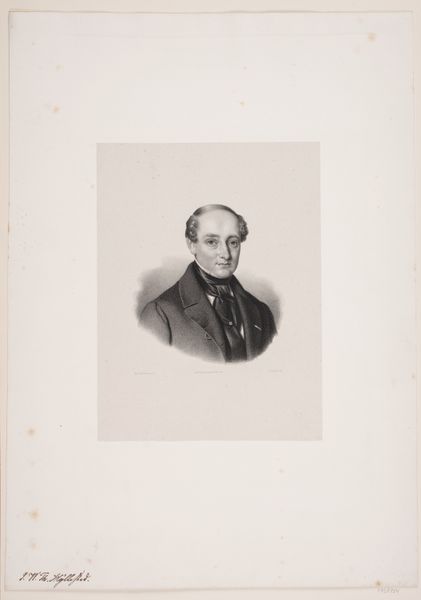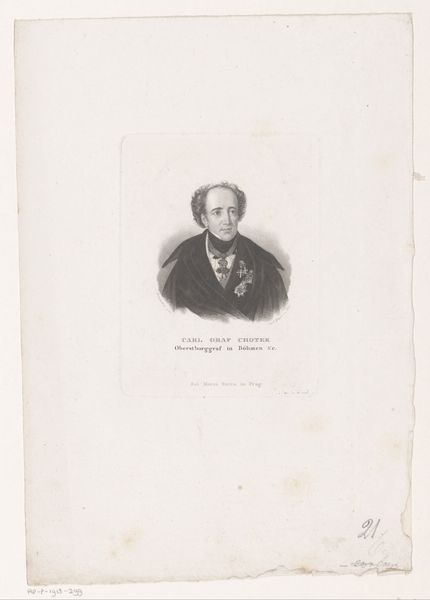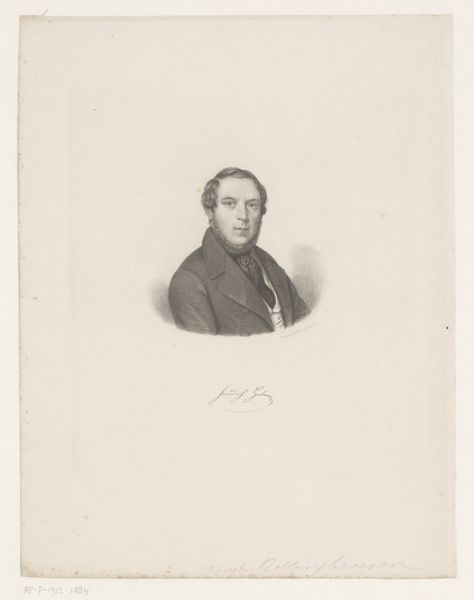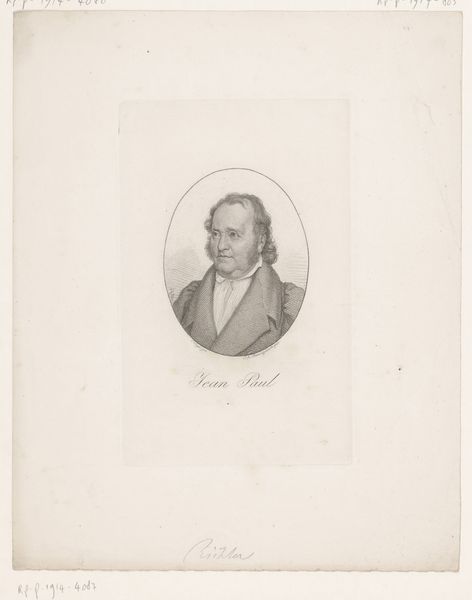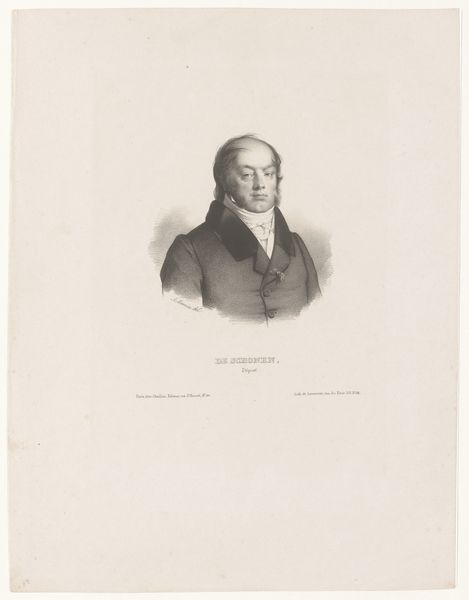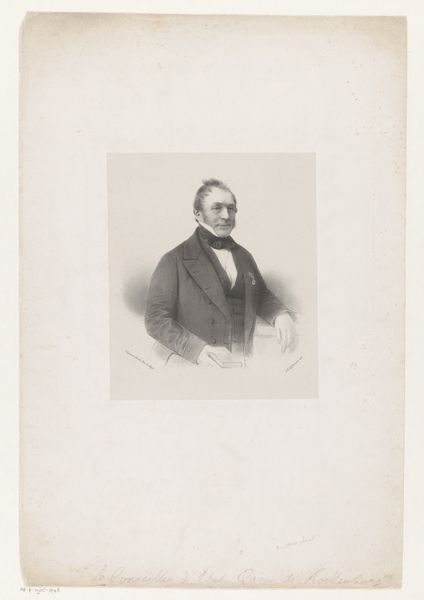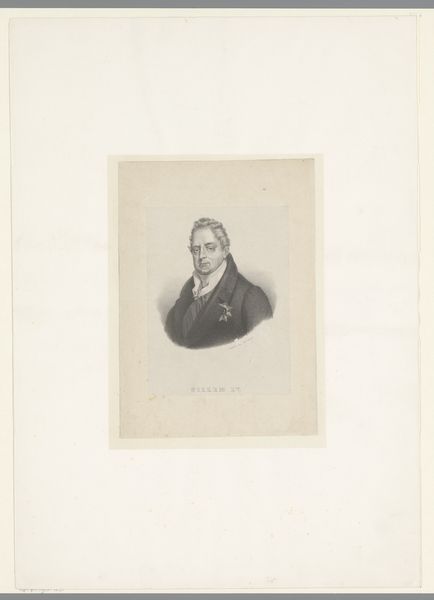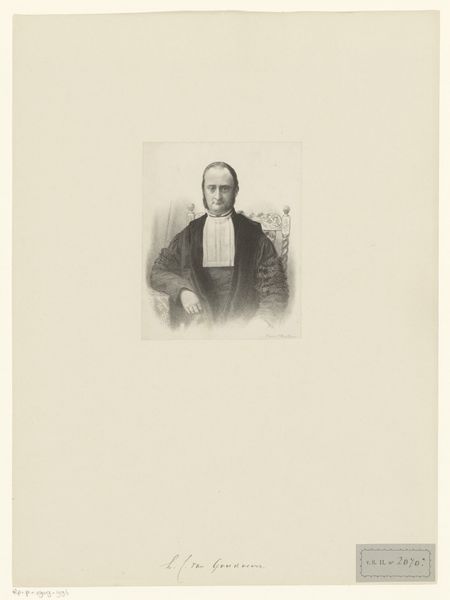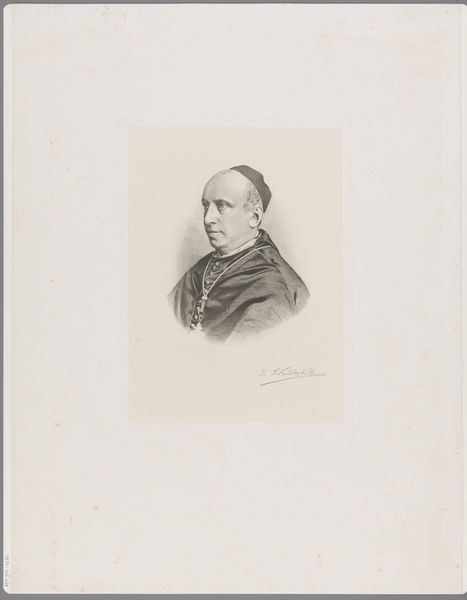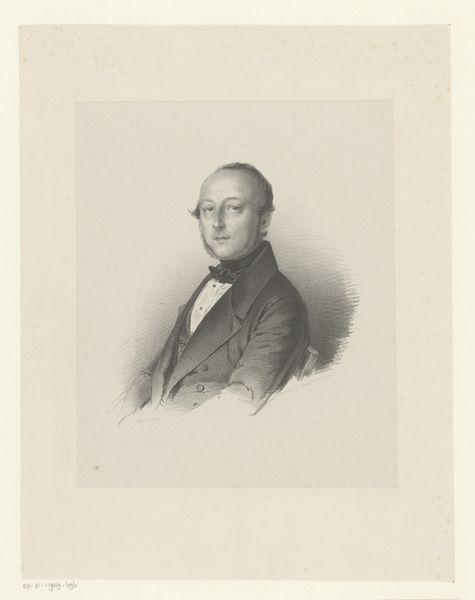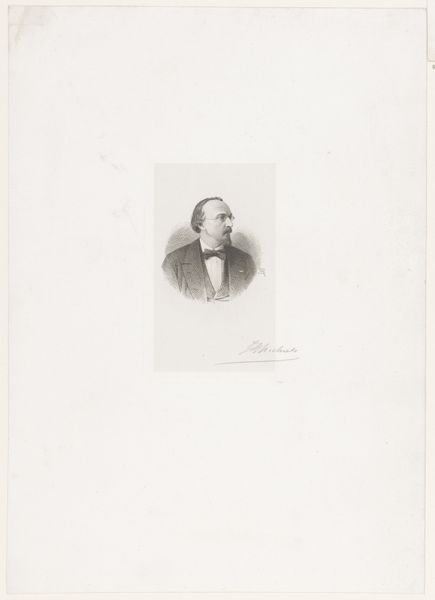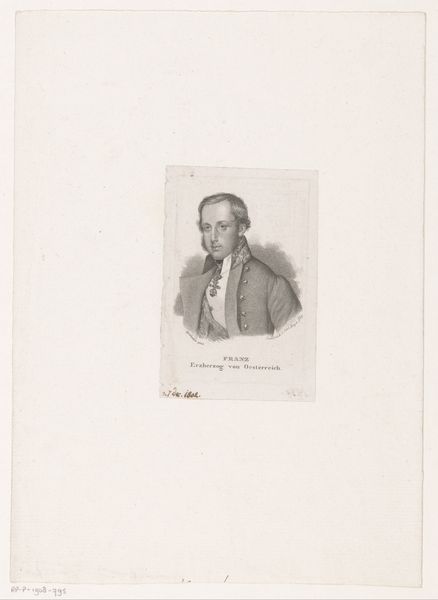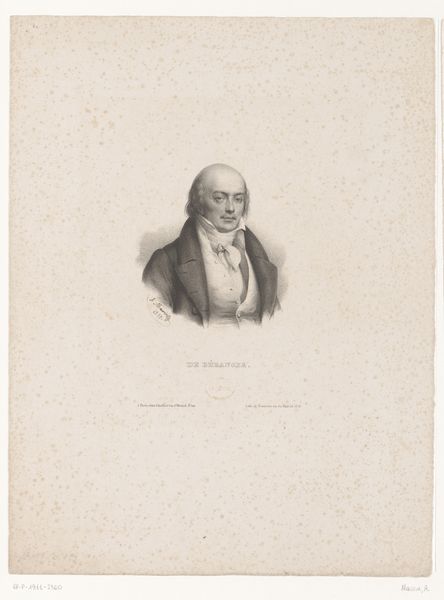
drawing, pencil
#
portrait
#
pencil drawn
#
drawing
#
pencil sketch
#
pencil drawing
#
pencil
#
portrait drawing
#
pencil work
#
academic-art
#
realism
Dimensions: height 404 mm, width 311 mm
Copyright: Rijks Museum: Open Domain
Editor: This is "Portret van de verzamelaar Neville Davison Goldsmid," a pencil drawing by Felix Cottrau, made sometime between 1828 and 1852. It's striking how formal he appears, but also how intimate the portrait feels given it's just a pencil drawing. How should we interpret this work and it’s possible impact? Curator: Well, considering the social and institutional context, this drawing likely served multiple purposes. Goldsmid was a collector; such portraits of prominent figures were often commissioned, circulating within elite social networks, serving as a form of social capital and commemorating status. What do you think the impact of that original intention to signal the collector’s status is when viewed in a museum today? Editor: It certainly changes how I see it. It feels less like a personal portrayal and more like a… carefully constructed image, meant for public, or at least semi-public consumption. So, the image performed a kind of labor for the collector, in other words? Curator: Precisely. Consider the gaze – direct, confident. The detailed rendering of his attire speaks to wealth and standing, all reinforcing that carefully constructed image you mentioned. And, think about the museum’s role now, in displaying this. It perhaps unintentionally continues that original function of asserting status, even centuries later. Does seeing that potential impact shift your initial impression? Editor: Definitely. I initially focused on the artistic skill. Now I see how the portrait actively participated in a system of power and social display. It is interesting that in museums these social functions persist through time and history, Curator: Indeed, museums become stages where these historical power dynamics are re-enacted and reconsidered, providing insights into the public role of art across time.
Comments
No comments
Be the first to comment and join the conversation on the ultimate creative platform.
